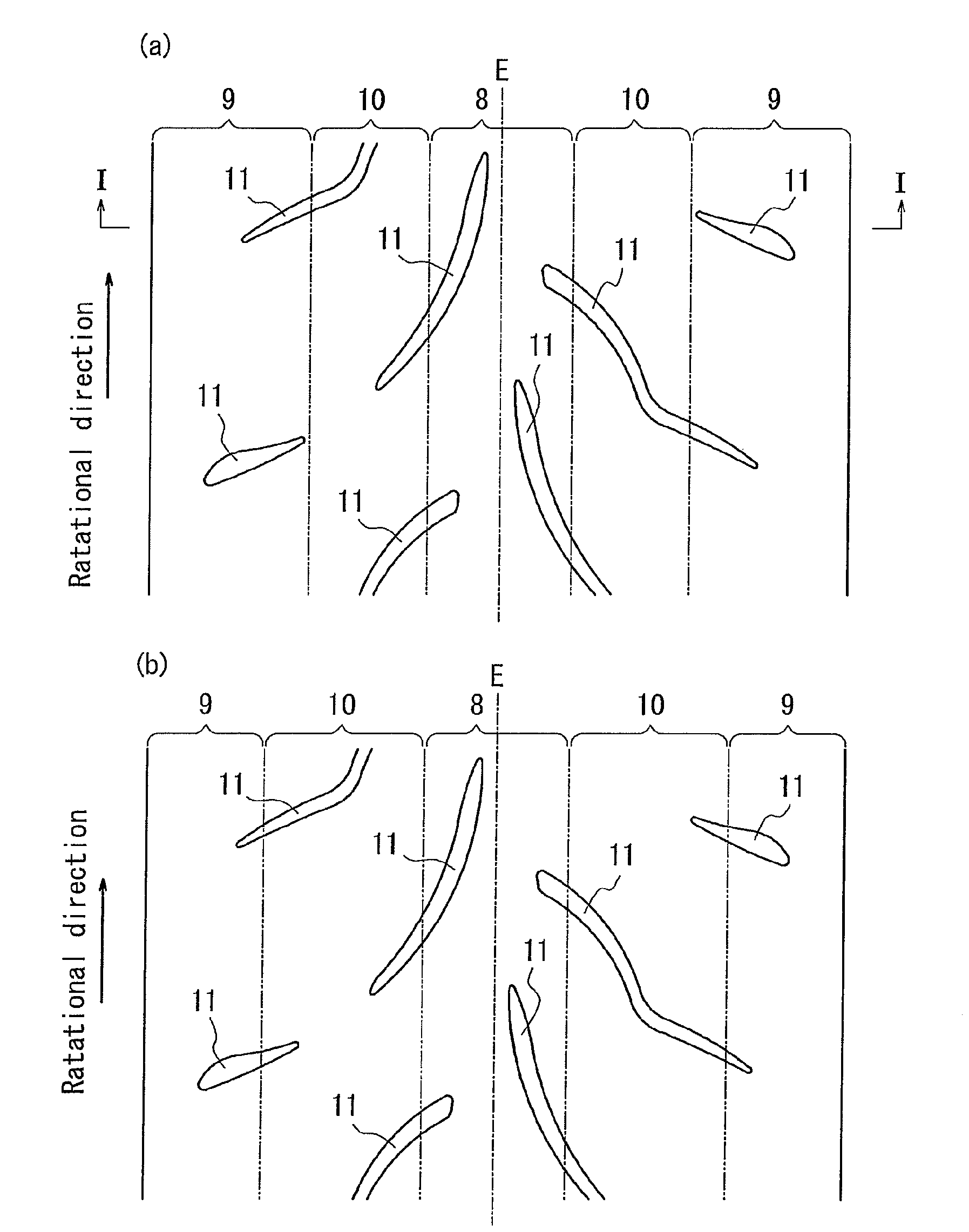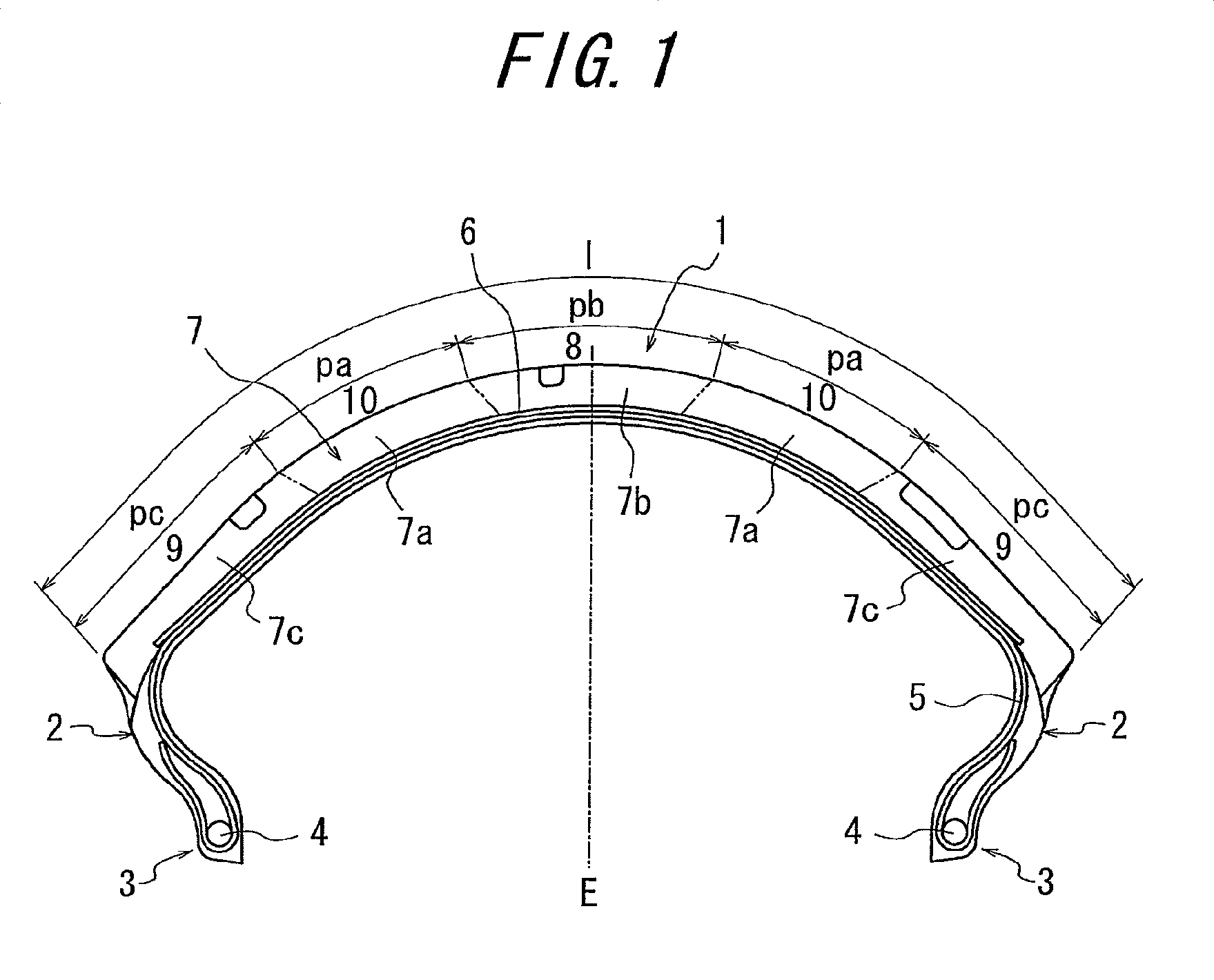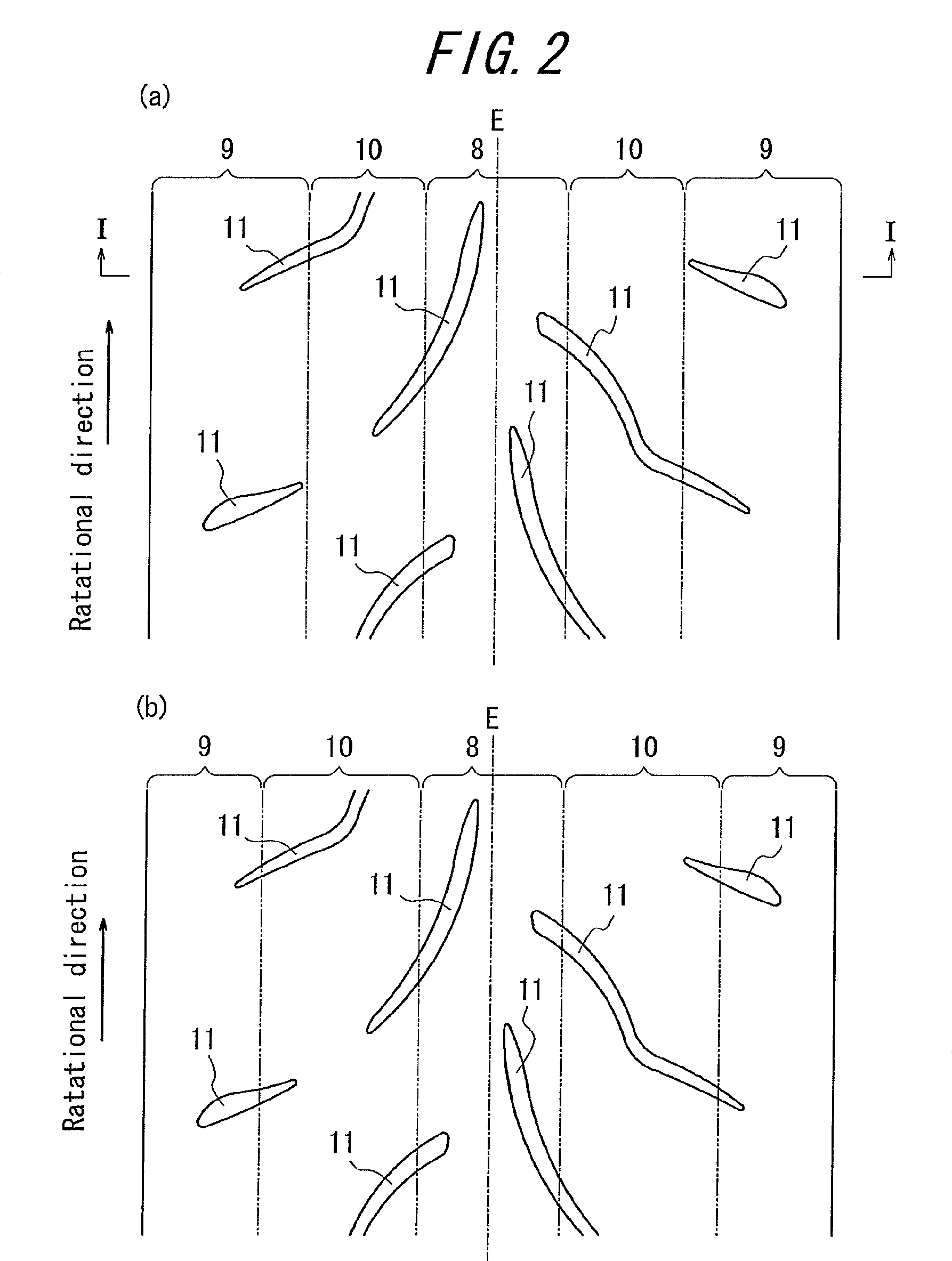Pneumatic tire for motorcycle having center, intermediate and shoulder rubber
a technology of shoulder rubber and pneumatic tire, which is applied in the direction of cycles, non-skid devices, transportation and packaging, etc., can solve the problems of not being able to make pneumatic tires, not being able to generate lateral force as a force, and still being unsatisfactory in exerting driving force or braking force on the road surface, so as to achieve efficient exertion of driving force or braking force, and strong lateral for
- Summary
- Abstract
- Description
- Claims
- Application Information
AI Technical Summary
Benefits of technology
Problems solved by technology
Method used
Image
Examples
examples
[0070]There were prepared Example tires, Comparative Example tires and Conventional tire for motorcycle, each having size 190 / 50ZR17, a carcass constituted of two carcass plies made of nylon cords, and a belt formed by a single belt layer structured by spiral winding of steel monofilaments, such that these test tires had 100% moduli and negative ratios as parameters as shown in Table 1. Each of these test tires was mounted to the rear wheel of a 1000 cc motorcycle having the front tire size of 120 / 70ZR17 and actually run on a road. Road gripping forces on a dry road surface and a wet road surface of each tire were evaluated, respectively, and the results shown in Table 2 were obtained.
[0071]Gripping force on a dry road surface and gripping force on a wet road surface were each evaluated by how an evaluation rider felt. The results are expressed as index values by using those of Conventional tire, where tread rubber was constituted of a single type of rubber, as control.
The larger in...
PUM
 Login to View More
Login to View More Abstract
Description
Claims
Application Information
 Login to View More
Login to View More - R&D
- Intellectual Property
- Life Sciences
- Materials
- Tech Scout
- Unparalleled Data Quality
- Higher Quality Content
- 60% Fewer Hallucinations
Browse by: Latest US Patents, China's latest patents, Technical Efficacy Thesaurus, Application Domain, Technology Topic, Popular Technical Reports.
© 2025 PatSnap. All rights reserved.Legal|Privacy policy|Modern Slavery Act Transparency Statement|Sitemap|About US| Contact US: help@patsnap.com



